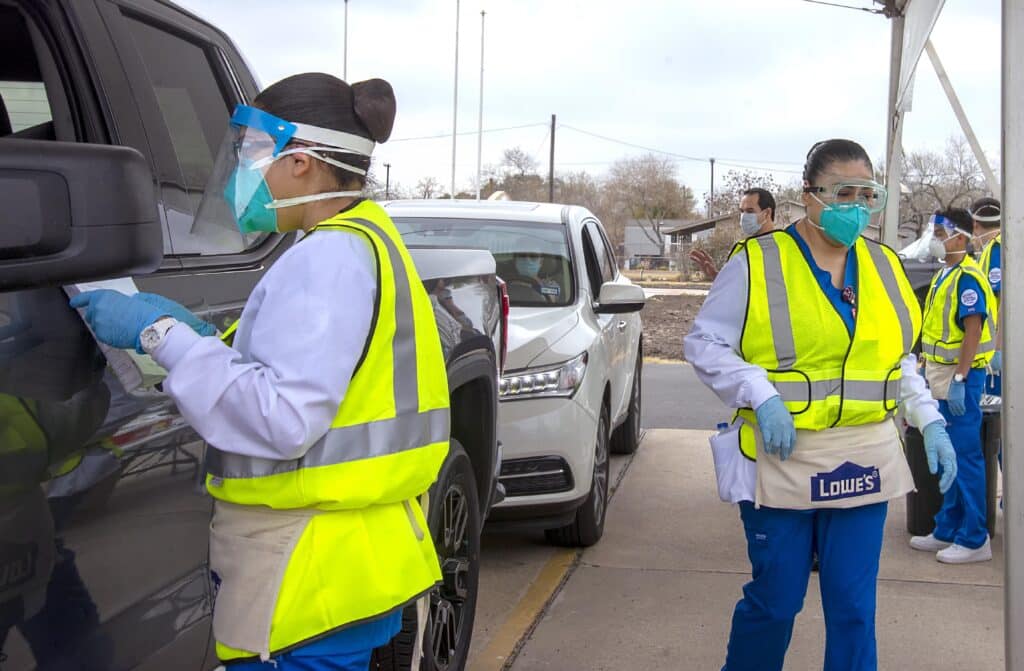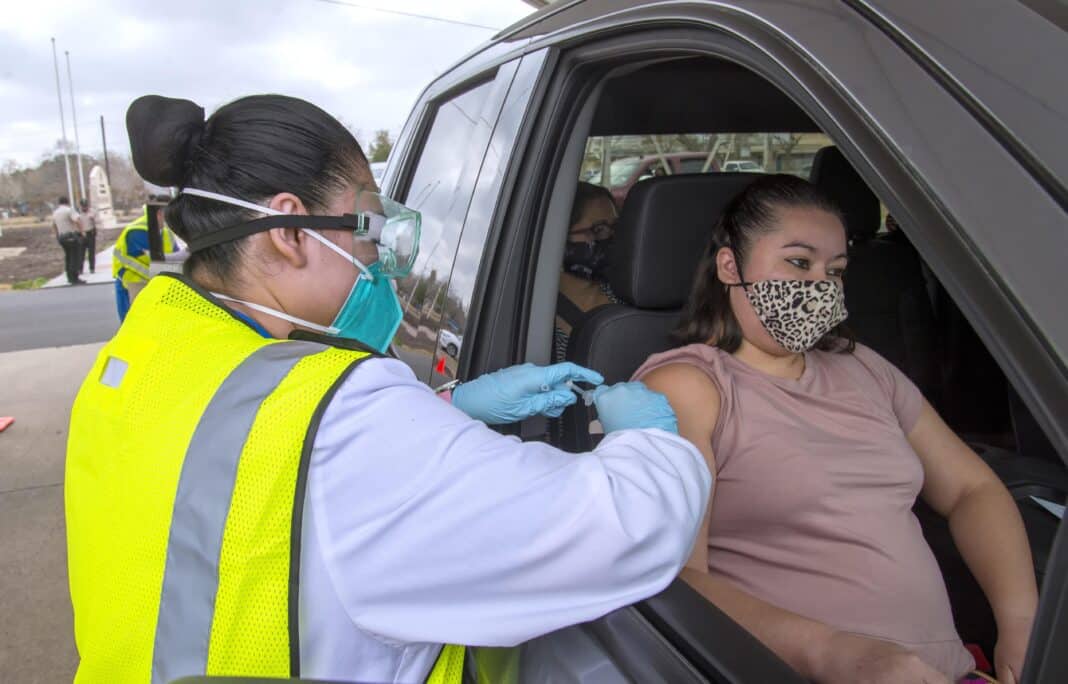HARLINGEN — While hundreds, if not thousands, of people wait inside their vehicles to get vaccinated, caffeine-driven nurses work tirelessly from dawn to dusk.
Heather Sauceda, a registered nurse and an instructor as well as the director of the vocational nursing program at TSTC, shared the beneficial aspects vaccine clinics have for her students and how a typical day goes for them.
Sauceda said her team has worked at a handful of clinics in Cameron County, making them almost experts at this point. She said her students jump at every opportunity to help at the clinics.
“When the community asks if we can help, we absolutely came. I think this is the best decision we made because not only does it help the community, but the students learn. And they are ready to graduate and be good to go,” she said.
Sauceda said upon arrival, a briefing of the roles and responsibilities is given.
Because her students have attended several clinics already, they are all familiar with each station.
“We just assign them whether they are going to be pre-screening, post-screening, vaccinator. They already know their roles and responsibilities. We talk about the number of doses, what are the time frames. And we come the day before, and we meet with directors and whoever we need to so it runs smoothly,” she said.
Nursing students attending clinics arrive by 5:45 a.m. and don’t leave until after the last person gets immunized.
Sauceda said in a recent clinic in Los Fresnos where 6,000 vaccines were given out, they arrived by 5:30 a.m. and left at 5:30 p.m.
Sauceda and her team were working at the Primera vaccine clinic Feb. 25, which started out at 6 a.m. and had an expectancy of 300 vaccines.
“We are scheduled to go tomorrow for another 6,000 in Los Fresnos,” she said that day in Primera.

Sauceda admits vaccine clinic days are exhausting, but she said she has seen her students endure the long hours with almost no complaints.
“My students are troopers. I have to make them go and take a break. They are like ‘no ma’am, we have to get this done, we have to get these people so they are not out there waiting,’” she said.
Because the majority of the vaccine clinics in Cameron County are currently focused on the elderly, Sauceda said her students want to be as fast as possible for them.
“They are an older generation, and we are so blessed that we have students that love our community. And our patients are number one. They are like, ‘No, I’ll take a break later, we have to get these patients in so they can get their immunization in and get them going,’” she said.
The working hours for these nurses are at least 12 hours each clinic. Sauceda agreed the days are long, but it is a way to prepare students for the job.
“Nursing, I am like, welcome to the real world. Your feet hurt and your back hurts at the end of the day,” Sauceda said.
As a nurse, Sauceda said COVID-19 has brought many issues but also blessings at the same time. In her work environment, it brought new challenges and made them find new ways to do things.
“In turn, it made us come up with new material so that we could teach our students to be adaptable like we are as nurses. Some of those kinds of lessons go into nursing. This pandemic has made them a lot more prepared to be nurses because they are used to going into changes up and down, here and there,” she said.
In retrospect, Sauceda believes the vaccine clinics are beneficial for both the people receiving the immunizations and the nursing students gaining the experience.
“It is a very great and important learning tool for our students, only because they are getting that hands-on learning that they need, and they are helping the community. That, of course as nurses, we ensure their health gets better, and this is one of the best ways we can do it at this time,” Sauceda said.




